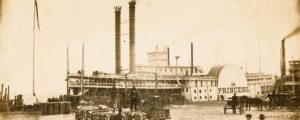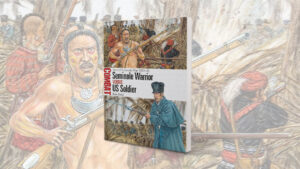Seminoles were wary of the white man—and his camera— so they hid for decades in the Everglades.
The Spanish of La Florida called every native they encountered cimarrón—runaway, wild one—a word later corrupted to “seminole.” Members of the proud Indian nation that came to be known as the Seminole call themselves The Unconquered, and the place they hid from the white man is known to them as Pa-hay-okee, the Grassy Water. Originally Creek Indians from Alabama and Georgia who were pushed ever southward, Seminoles were killed, captured and transported by the thousands in the Seminole Wars of the 1800s. But the tribe’s last redoubt, the Everglades, ultimately defeated the U.S. Army. “It is in fact a most hideous region,” snarled an army surgeon, “a perfect paradise for Indians, alligators, serpents, frogs and every other kind of loathsome reptile.” By the turn of the 20th century only about 325 Seminoles were left there. A trove of photographs from that era, unearthed in the American Museum of Natural History, has been collected in Hidden Seminoles (University Press of Florida). “Their historical importance is beyond question,” writes tribal historian Tina Osceola, a descendant of a Seminole war hero. “But to us, they have even greater value, for they are photographs of our ancestors.”
Into the Heart of Darkness
It was the age of the Outdoorsman. After Wall Street millionaire A.W. Dimock, 65, suffered his fourth bankruptcy, he convinced his photographer son, Julian, 31, to team up with him to produce adventure stories. Scribe and Cameraman set off from New York by steamship, train and mail boat. In Florida they found a 130-by-70-mile tract of watery wilderness that was “as unknown to the white man as the heart of Africa,” according to a fellow explorer of the day. A 37-foot houseboat with darkroom became their headquarters. One day at a trader’s outpost, Julian set up his tripod and asked a suspicious Seminole to pose, promising, as visitors often did, to send pictures. Heretofore, no photographs had been forthcoming, but Julian went back to his darkroom. When given the print, the man “looked as if he was about to faint,” recalled Julian. “Suddenly the attitude of the Indians toward us changed.” Father and son were able to convince a local man to guide and interpret, and the intrepid chroniclers set forth by canoe, motorboat and oxcart to slog through many tortuous journeys to photograph the secretive tribe.
Old and New Worlds Collide
Peoples and cultures can be as endangered as wildlife and environments. Conservationists who early traded rifles for cameras, the Dimocks plied the Everglades for a decade. Many Seminoles feared government agents and missionaries, and documentarians would be added to that list. In 1910, anthropologist Alanson Skinner went to the area on an artifact collecting expedition for the American Museum of Natural History, and the party was turned away from one camp at gunpoint. Julian, engaged as Skinner’s photographer, grew uneasy with the process of capturing the wild: “Self respect vanished.” He eventually gave up photography entirely to farm in Vermont, and in 1920 he donated 6,000 prints and glass negatives to the museum. The wild ways were further eroded when the government spent millions to drain the Everglades—a process that is costing billions to reverse—and established reservations. Today The Unconquered, who in 1979 became the first tribe to initiate gaming, are prosperous. And thanks to these photographs, the old wild ones and their wild world have been preserved.
Originally published in the October 2012 issue of American History. To subscribe, click here.




